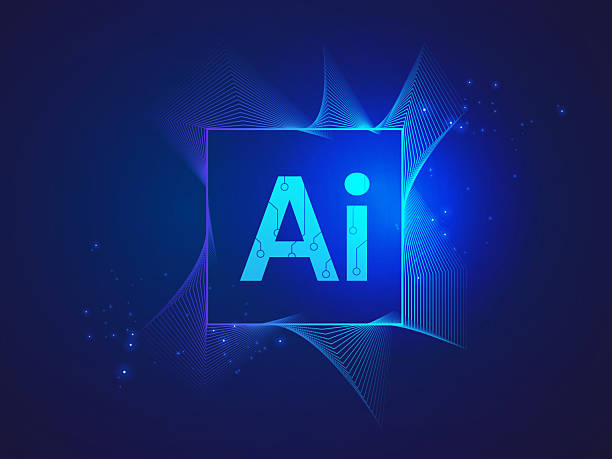The Importance of Fast Website Design in Today’s World

In today’s digital world, speed is not just an advantage, but an undeniable necessity.
Imagine you are looking for information, and the website you open takes more than a few seconds to load.
What happens? Most likely, you close it and move on to the next site.
This bitter reality incurs heavy costs for businesses.
Fast website design is no longer a luxury option; rather, it is a vital competitive advantage that directly affects user experience, conversion rates, and even your site’s ranking in search engines.
But why is it so important? Do you know that even a one-second delay in loading can mean losing thousands of visitors and customers? This issue is not only related to user satisfaction but is also a key factor in Google’s ranking algorithms.
In this article, we will delve into all aspects of fast website design in an explanatory and thought-provoking manner.
From #Important_Website_Speed_Factors to #Website_Optimization_Tools and #Speed’s_Impact_on_SEO, we will examine everything in detail.
Are you looking to increase sales? Do you want to retain more users on your site? Are you concerned about better Google rankings? The answer lies in your website speed optimization.
Ignoring speed means ignoring countless customers and opportunities.
Let’s dive deep into this topic together and see how you can turn your site’s speed into a winning card and provide an unparalleled user experience.
This is an investment that will yield significant returns.
Do you dream of a thriving online store but don’t know where to start?
RasaWeb is your comprehensive e-commerce website design solution.
✅ Attractive and user-friendly design
✅ Increased sales and revenue⚡ Get Free Consultation
Numerous Benefits of a High-Speed Website

Building a website that loads at high speed offers numerous benefits that go beyond mere user satisfaction.
Primarily, User Experience (UX) significantly improves.
Modern users have little patience and expect to receive information instantly.
A fast-loading website not only leads to increased satisfaction but also dramatically reduces the bounce rate.
When users don’t have to wait, they are more likely to stay on the site, view more pages, and interact with your content.
This is a crucial analysis that directly impacts your online success.
Furthermore, website speed optimization directly impacts your SEO.
Google and other search engines consider loading speed as an important ranking factor.
Faster websites achieve better rankings and are more visible in search results.
This means more organic traffic and, consequently, higher potential for customer conversion.
A high-speed website can also increase the Conversion Rate.
Whether your goal is to sell products, generate leads, or user registrations, high speed can significantly help in achieving these goals.
Users are in a hurry, and if the purchase or registration process is slow, they might abandon it midway.
Speed optimization for fast website design not only keeps users satisfied but also indirectly helps increase your revenue.
This comprehensive analysis shows that investing in fast website design is a strategic decision for any online business.
In the long run, its benefits will far outweigh the initial optimization efforts.
From increased traffic and improved SEO rankings to enhanced customer satisfaction and sales growth, all are the result of an optimized and fast website.
Key Factors Affecting Website Loading Speed
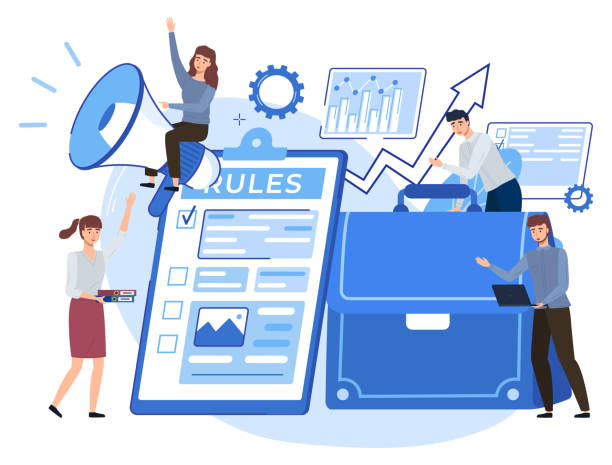
To achieve fast website design, understanding the key factors influencing loading speed is essential.
These factors include various aspects from infrastructure to site content.
One of the most important is hosting and server.
The type of host (shared, dedicated, cloud), the geographical location of the server, and its hardware quality all play a significant role in the initial site speed.
Choosing a reliable and fast hosting provider is the first step in this direction.
The second factor is optimizing images and media.
High-volume images without proper compression can significantly reduce loading speed.
Using appropriate formats (such as WebP), lossless compression, and lazy loading for images outside the user’s viewport are essential solutions in this regard.
This section is a practical tutorial for every webmaster.
Next, optimized coding and file compression (CSS, JavaScript, HTML) become important.
Removing extra code, minification, and Gzip compression of these files can reduce the overall page size and increase processing speed by the browser.
Using a Content Delivery Network (CDN) is also a very effective solution for sites with global audiences to reduce server response time and deliver content from the closest point to the user.
| Factor | Description | Importance |
|---|---|---|
| Hosting | Quality and location of the website’s host server | Very High |
| Image Optimization | Compression, appropriate format, lazy loading | High |
| CSS/JS/HTML Files | Minification and Compression | Medium to High |
| Using CDN | Content distribution from the closest server | High (for global sites) |
| Browser Cache | Storing files for subsequent visits | High |
Browser cache management also helps users view the site faster on subsequent visits.
These are all essential parts of expert guidance for fast website design and its speed optimization.
Server-Side and Backend Optimization

When it comes to fast website design, superficial and frontend optimizations alone are not enough.
Server-side Optimization (Backend Optimization) plays a vital role in the overall speed of the site.
This section includes several key aspects that need to be addressed professionally.
The first is database optimization.
Large and disorganized databases can significantly increase server response time.
Removing unnecessary data, optimizing queries, and using appropriate indexes are essential steps to improve database performance.
The second important step is server code optimization.
Using efficient programming languages, optimized algorithms, and lightweight frameworks can significantly increase the speed of request processing.
Furthermore, implementing server-side caching mechanisms, such as caching full pages or parts of them, can reduce the load on the server and deliver content to the user more quickly.
This method is a very effective guideline for high-traffic websites.
Choosing the right server is also of high importance.
In addition to hosting quality, proper server configuration, using high-speed web servers like Nginx or Apache with optimized settings, and enabling Gzip compression at the server level all contribute to increased speed.
Also, ensuring that server software (operating system, programming language, database) is up-to-date can help improve performance and security.
These actions not only help in building a high-speed website but also enhance the stability and security of your site.
Backend optimization is a complex process that requires technical knowledge, but its results significantly impact your user experience and overall site performance.
This investment in infrastructure guarantees optimal performance and long-term stability.
Are you bothered by losing customers due to your e-commerce website’s outdated appearance or slow speed? RasaWeb’s expert team solves these problems with professional e-commerce website design!
✅ Increase customer trust and your brand’s credibility
✅ Stunning speed and excellent user experience
Get a free consultation on online store design with RasaWeb now ⚡
Frontend Optimization for More Speed
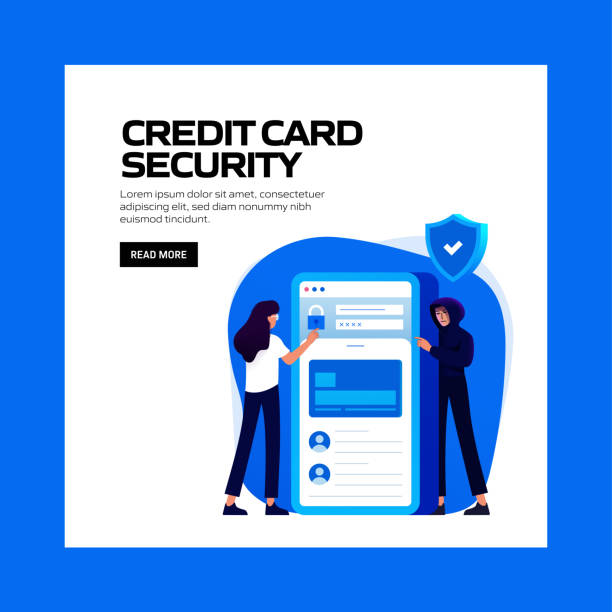
The frontend of the website, which is everything the user directly sees and interacts with in their browser, plays a vital role in fast website design.
Even with an optimized backend, if the frontend is heavy and inefficient, the site will appear slow.
Image optimization, as previously mentioned, is one of the most important actions in this section.
But this is just the beginning.
Using compression and Minification for CSS and JavaScript files is another key solution.
These processes mean removing white spaces, comments, and extra characters from the code, which reduces file size and speeds up loading time.
Asynchronous Loading and Deferring of JavaScript files are also important techniques in this area.
These methods allow the browser to prioritize loading the main page content and process JS files in the background or after the initial content has loaded.
This is a practical tutorial for every frontend developer.
Also, optimizing fonts and using system fonts or Google Fonts with optimized loading can significantly impact speed.
High-volume custom fonts can create major bottlenecks.
Implementing Browser Caching also helps users avoid re-downloading all files on subsequent visits, allowing them to experience the site faster.
These techniques are a set of the most specialized solutions for achieving fast website design and an unparalleled user experience.
By implementing these frontend optimizations, you can ensure that your site loads in the best possible way, even on devices with low internet speeds.
These aspects directly affect the user’s perception of your website’s speed and responsiveness.
Website Speed Measurement Tools and Metrics
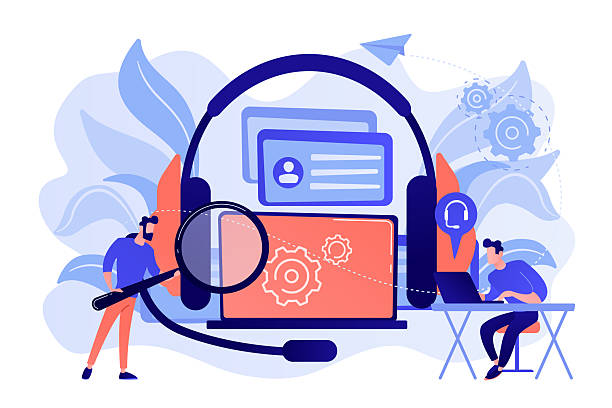
To have fast website design, we must first know what our current site speed is and what problems exist.
Fortunately, powerful tools are available for measuring and analyzing website speed.
Google PageSpeed Insights is one of the most widely used tools, displaying your site’s speed scores for mobile and desktop and offering suggestions for improvement.
This tool utilizes Google’s Core Web Vitals (including LCP, FID, CLS), which are key metrics for user experience.
GTmetrix and Pingdom Tools are also popular tools that provide deeper analyses, including full load time, number of requests, and Waterfall Charts to show the order of resource loading.
These charts help you identify loading bottlenecks.
The guidance from these tools is crucial for accurately diagnosing site performance issues.
When using these tools, several key metrics should be considered:
- First Contentful Paint (FCP): The time when the first content (text or image) is rendered on the screen.
- Largest Contentful Paint (LCP): The time when the largest content element in the user’s viewport is rendered.
This is an important metric for user experience. - Cumulative Layout Shift (CLS): The visual stability of the page.
It measures unexpected content shifts during loading. - Time to Interactive (TTI): The time when the page becomes fully interactive, meaning the user can interact with it without delay.
- Total Blocking Time (TBT): The total time that the page is blocked from user interaction.
These metrics provide a comprehensive overview of your site’s speed status and help you plan precisely for optimizing your website’s speed.
Regular monitoring of these metrics is crucial to ensure optimal speed is maintained after fast website design.
By correctly using these tools and understanding their metrics, you can continuously improve your site’s performance and ensure users have the best possible experience.
The Impact of Website Speed on SEO and User Experience

As previously mentioned, website speed is no longer merely a technical factor, but an inseparable element of SEO strategy and improving User Experience (UX).
Google has repeatedly emphasized that page loading speed is an important ranking factor.
This means that if two websites have similar content and content quality, the site that loads faster will have a better chance of achieving a higher ranking in search results.
This is a crucial analysis for anyone looking to increase visibility and organic traffic.
From a user experience perspective, website speed directly impacts user behavior.
Numerous studies have shown that every second of delay in loading can reduce conversion rates by up to 7% and lower customer satisfaction by up to 16%.
This is unpleasant news for businesses that neglect speed.
Users quickly become frustrated and move on to competitors without hesitation.
A fast website design not only keeps users on the site but also increases their Dwell Time and reduces the bounce rate; factors that send positive signals to search engines.
The impact of website speed on UX also relates to branding.
A fast and smooth-running website creates a positive image of professionalism and customer care in users’ minds.
This, in turn, contributes to customer loyalty and increases brand credibility.
Implementing fast website design means investing in the future of your business.
| Area of Impact | Explanation | Result of Speed Improvement |
|---|---|---|
| SEO Ranking | Speed is a direct Google ranking factor. | Increased ranking in search results |
| Bounce Rate | Users leave slow websites. | Reduced bounce rate |
| User Dwell Time | Faster websites retain users longer. | Increased dwell time |
| Conversion Rate | Smooth user experience helps increase sales. | Increased sales and leads |
| Customer Satisfaction and Branding | A fast website conveys professionalism. | Increased loyalty and brand credibility |
In summary, speed is not only important for SEO but also forms the foundation of a successful user experience and, consequently, the growth and prosperity of your online business.
Optimization for speed should be prioritized at every stage of website development.
Common Mistakes That Reduce Website Speed

On the path to achieving fast website design, there are some common mistakes that can nullify your efforts and severely reduce site speed.
Recognizing and avoiding these mistakes is an important step towards optimization.
One of the biggest mistakes is not using image compression.
Loading high-volume images without optimizing their format and size can take up a significant portion of the page loading time.
This is an unwise mistake that can be easily fixed.
Another mistake is ignoring browser caching.
Not enabling browser caching causes users to re-download all static files (CSS, JS, images) on every visit to the site, which severely reduces loading speed.
Also, excessive use of plugins in Content Management Systems like WordPress can lead to increased HTTP requests, larger JavaScript and CSS file sizes, and ultimately slower site performance.
You should evaluate the necessity of every plugin you install.
This is an important specialized consideration in site management.
Choosing inappropriate and cheap hosting is also a fatal mistake.
Shared hosts with limited resources and crowded servers cannot meet the needs of a site with medium to high traffic and quickly lead to slowdowns and even downtime.
Lack of database optimization and inefficient queries can also significantly increase server response time.
These are all examples of questionable content regarding why your site might be slow.
Finally, not using a CDN for sites with global audiences means that users from distant locations will spend more time receiving content.
Avoiding these key mistakes will help you get closer to optimizing your site’s speed and provide a better user experience.
Are you bothered by losing customers due to your e-commerce website’s outdated appearance or slow speed? RasaWeb’s expert team solves these problems with professional e-commerce website design!
✅ Increase customer trust and your brand’s credibility
✅ Stunning speed and excellent user experience
Get a free consultation on online store design with RasaWeb now ⚡
The Future of Web Design and the Role of Speed
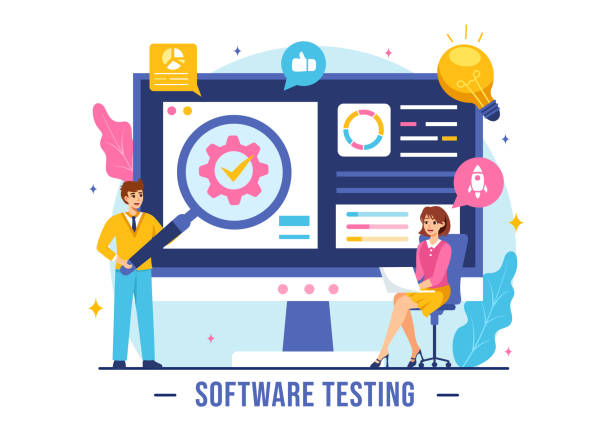
The future of fast website design lies not only in current optimizations but also in emerging technologies and new approaches.
The paradigm shift towards Progressive Web Apps (PWAs) is indicative of this trend.
PWAs combine native app-like user experiences with the speed and accessibility of the web and can even work offline, naturally improving speed and access.
This is important news for the future of the web.
The continuous development and optimization of JavaScript frameworks like React, Vue, and Angular, which are moving towards Server-Side Rendering (SSR) or Static Site Generation (SSG), also help increase initial loading speed.
These frameworks provide a faster experience by reducing client-side JavaScript volume and delivering pre-built content.
Also, the emergence of newer protocols like HTTP/3, built on UDP, which improves upon HTTP/2’s issues in high-latency and packet-loss networks, promises further increases in web data transfer speeds.
These protocols are analytically examined to determine their true potential for building high-speed websites.
The use of Artificial Intelligence and Machine Learning in web optimization is also growing.
These technologies can automatically compress images, remove unnecessary code, or even suggest the best caching strategies.
Finally, the focus on Mobile-First and Google’s Core Web Vitals indicates that the future of the web is a website that is not only fast but also stable, interactive, and accessible across all devices and connections.
These trends are all aimed at achieving fast website design and providing the best user experience in the digital age, helping us build websites that align with user expectations and future technologies.
This is an exciting outlook on the path ahead.
Additional Tips for Maintaining High Speed

After implementing all optimizations for fast website design, it’s important to remember that speed is not a fixed attribute and requires continuous maintenance and monitoring.
Websites are dynamic, and their speed can be affected by the addition of new content, plugins, or code changes.
Therefore, regular speed monitoring with the tools previously introduced is a key guideline.
Setting alerts for sudden drops in speed can help you quickly identify and resolve issues.
Another important tip is regular updates of the Content Management System (CMS) core, theme, and plugins.
Developers constantly provide optimizations and performance improvements in their updates, which can help increase site speed and security.
Ignoring these updates not only exposes the site to security vulnerabilities but also prevents it from benefiting from the latest performance optimizations.
Regular database cleanup and removing spam comments, old revisions, and inactive plugins can also help maintain site speed.
Heavy and disorganized databases can negatively impact overall site performance over time.
Additionally, training the content creation team on image optimization before uploading and avoiding extra code in content is of high importance.
This is a continuous training that instills a culture of speed throughout the team.
By following these expert tips and continuing the optimization process, you can ensure that your site is not only designed fast but also remains a high-speed website for a long time, providing an excellent user experience.
Frequently Asked Questions
| No. | Question | Answer |
|---|---|---|
| 1 | What is the concept of “Fast Website Design”? | Designing a website that loads in the shortest possible time and provides a smooth user experience, with an emphasis on performance optimization. |
| 2 | Why is website loading speed important for users? | Today’s users have little patience; slow websites lead to premature page abandonment, poor user experience, and loss of visitors. |
| 3 | How does fast website design affect SEO? | Search engines like Google consider website speed as a ranking factor. Faster websites achieve better rankings in search results. |
| 4 | What are the main factors affecting website speed? | Image optimization, caching, CSS and JS file compression, using powerful hosting, reducing HTTP requests, and optimized coding. |
| 5 | How can website loading speed be measured? | By using tools such as Google PageSpeed Insights, GTmetrix, Lighthouse, and Pingdom Tools, which provide detailed reports on site performance. |
| 6 | What is the role of images in website speed and how should they be optimized? | High-volume images can severely reduce website speed. They should be compressed, use modern formats (like WebP), and leverage Lazy Load techniques. |
| 7 | What is the importance of choosing appropriate hosting in fast website design? | A powerful and high-speed hosting (preferably SSD) with optimized servers close to target users is the foundation of a website’s speed. |
| 8 | How does caching help increase website speed? | Caching allows the user’s browser to store copies of site files, so on subsequent visits, there’s no need to reload all content, and the site appears faster. |
| 9 | Is using a CDN (Content Delivery Network) recommended in fast website design? | Yes, CDN significantly increases loading speed by storing copies of site content on various geographical servers and delivering it from the closest server to the user. |
| 10 | What are the key tips for developers to design a high-speed website? | Writing clean and optimized code, minimal use of plugins, optimizing database queries, using lightweight frameworks, and implementing Lazy Load for content. |
And other services of RasaWeb Advertising Agency in the field of advertising
Smart Social Media: Designed for businesses looking to increase click-through rates through optimizing key pages.
Smart Marketplace: A professional solution for campaign management with a focus on precise audience targeting.
Smart Data Analysis: Designed for businesses looking to improve SEO ranking through marketing automation.
Smart Brand Identity: Professional optimization to increase website traffic by customizing user experience.
Smart Advertorial: A combination of creativity and technology for digital branding through intelligent data analysis.
And over a hundred other services in the field of internet advertising, advertising consultation, and organizational solutions
Internet Advertising | Advertising Strategy | Advertorial
Resources
Website Speed Optimization
Increase Website Speed with These Tips
Secrets to Increasing Website Speed
Website Speed Test Tools
? RasaWeb Afarin, a leading digital marketing agency, paves the way for your business success. From professional e-commerce website design to comprehensive SEO strategies, we are ready to distinguish your brand in the online space and bring it to its peak.
📍 Tehran, Mirdamad Street, next to Bank Markazi, Kazeroun Jonubi Alley, Ramin Alley, No. 6




